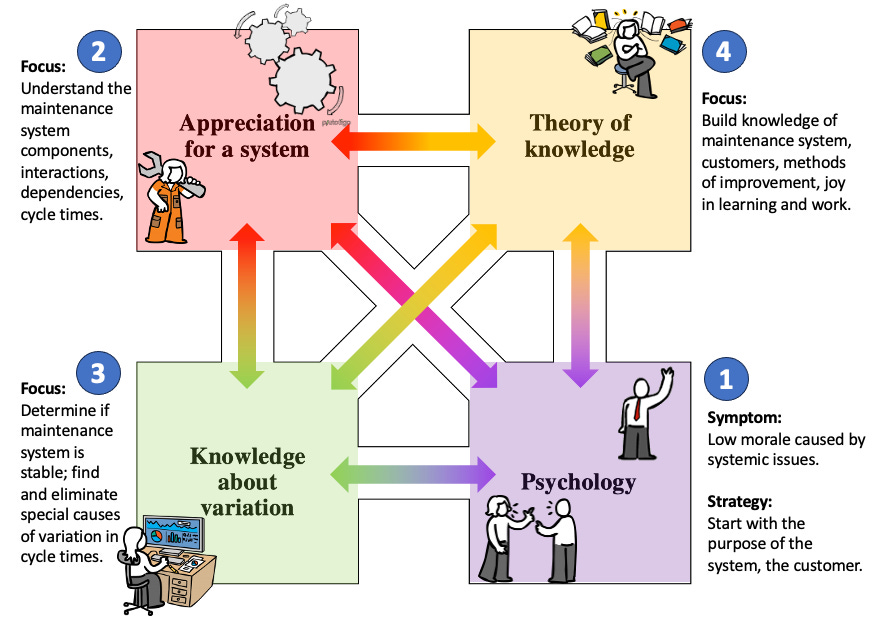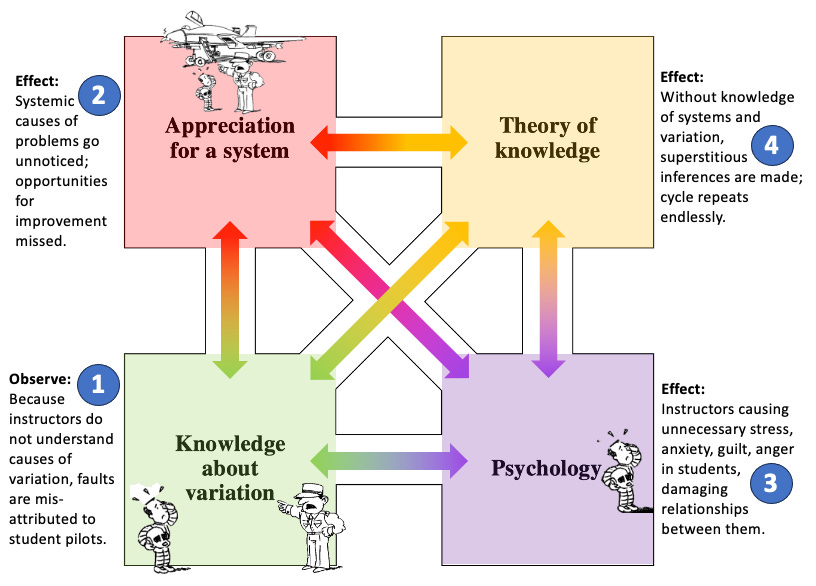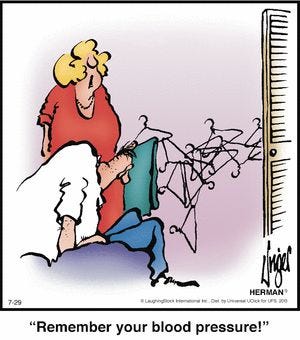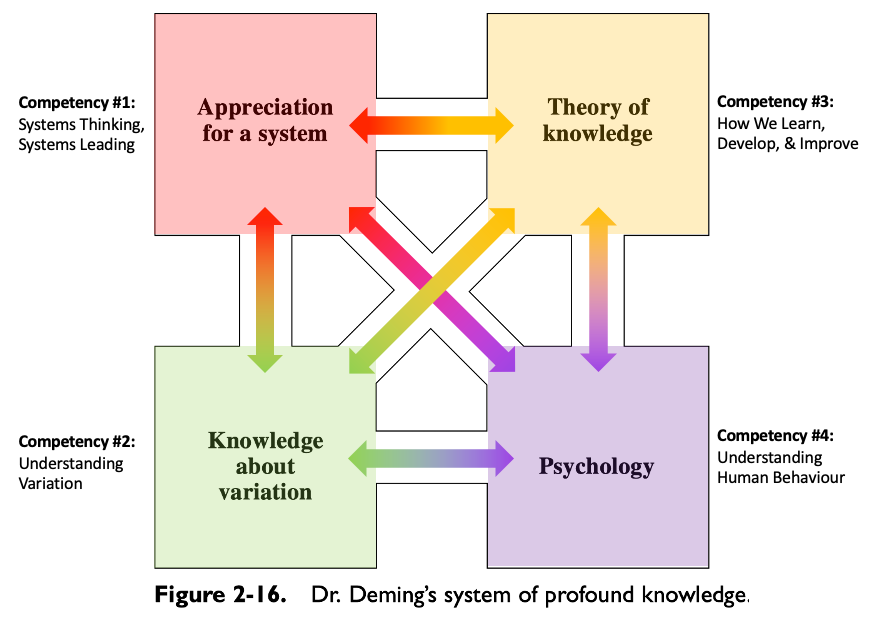New Competency #5: Understanding the Interaction and Interdependence between Systems, Variability, Learning, and Human Behaviour
A Map for Understanding How to Improve and Where to Begin
I wouldn’t give a fig for the simplicity on this side of complexity, but I would give my life for the simplicity on the other side of complexity.
- Attributed to Justice Oliver Wendell Holmes, quoted by Scholtes in The Leader’s Handbook (p. 46)
The various segments of the system of profound knowledge proposed here can not be separated. They interact with each other. Thus, knowledge of psychology is incomplete without knowledge of variation. A manager of people needs to understand that all people are different. This is not ranking people. He needs to understand that the performance of anyone is governed largely by the system that he works in, the responsibility of management. A psychologist that possesses even a crude understanding of variation as will be learned in the experiment with the red beads (Ch. 7) could no longer participate in refinement of a plan for ranking people.
- Deming, Dr. W.E. The New Economics, 3rd Ed. (p. 64)
THE AIM for today’s newsletter is to review Peter Scholtes’ fifth new leadership competency, Understanding the Interaction and Interdependence between Systems, Variability, Learning, and Human Behaviour and Knowing How Each Affects the Others, as he describes in his classic book, The Leader’s Handbook. This one overarches the preceding four by intent, mirroring the domains of Deming’s System of Profound Knowledge, describing how each works with the other as a system map at a meta-level. We will also review two mini case studies that Scholtes provides to help us understand how to apply this map as a guide for diagnosing system issues and where to begin improvements.
If you are just joining in, you can catch up on the prior competencies below:
Competency #1: Systems Thinking, Systems Leading
Competency #2: Understanding Variation
Competency #3: How We Learn, Develop, and Improve
Competency #4: Understanding People and Why They Behave as They Do
A System of Profound Competencies
Scholtes fifth new leadership competency is, in reality, a map of the prior four that are themselves elaborations on the canonical four domains of Dr. Deming’s System of Profound Knowledge. He drops the pretense and illustrates this with the following diagram that I’ve coloured and annotated for clarity:
Each of the four domains/competencies is interrelated and interdependent on the other three, expressing a theory of leadership as a sophisticated, self-referencing system that also provides a map and tutorial level for understanding how to see and think with a systems view. It teaches us that in order to use the map successfully, we need to appreciate how any action, insight, or change in one domain/competency reverberates through the others and subsequently the whole in a dynamic dance.
For those new to this way of thinking, it can feel a bit counterintuitive and even overwhelming. How can we use this complex lattice of ideas and theory help improve how we lead organizations? Won’t it be like nailing jello to a wall?
Thankfully, Mr. Scholtes has a couple of examples to walk us through…
Mini Case Study: Wisconsin Motor Equipment Operation
One of Scholtes’ first applications of Deming’s management theory map was with his colleague, Dr. Bill Hunter, for the City of Madison’s Wisconsin Motor Equipment Operation department, which was responsible for maintaining and repairing city vehicles including police cars, garbage trucks, snowplows, and even Zambonis (propane-powered tractors that resurface skating rinks). In the diagram below, you can see a broad overview of the approach their engagement took:

Workers in the garages told Scholtes that morale (1) was identified as their biggest problem, which he intuited as a symptom of upstream systemic issues (2). Using Deming’s System of Profound Knowledge as a map, he shifted their attention to understanding how their own system works, starting with surveying their “customers” in the various departments they served. They also undertook a cycle time study to learn how long it was taking to get broken-down vehicles back in service, which naturally led to learning about the variation their processes were presenting and whether they were stable (3). After 6-8 weeks’ work on various sub-projects aimed at reducing the maintenance and repair cycle times, the original complaint about morale had all but disappeared in the excitement and enthusiasm in learning about how to improve their operations (4). Joy in learning and work had replaced cynicism and led to increased customer satisfaction (4 back to 1).
Mini Case Study: Israeli Air Force Instructors
The second case study Scholtes uses to help us understand how to use Deming’s theory map is the scenario we covered in New Competency #2 about the errant Israeli Air Force instructors who mistakenly believed that pilots’ performance was positively-correlated to how roughly they were treated. Because they did not understand the two types of variation systems present (common, special), they misattributed “bad” days to the pilots, and “good” days to the amount of yelling they received (1).
I’ve plotted the path of the original scenario, sans improvements, in the map below:

As shown in (2), because of their lack of knowledge about routine sources of variation in their system, they missed out on an opportunity to address how to improve without relying on reprimands which caused commensurate stresses and negative emotions with their students (3). Consequently, they created superstitious cause-and-effect inferences that impaired further learning (4), ensuring the cycle would just repeat endlessly, going back to (1).
Summary
In this post we reviewed Scholtes’ fifth new leadership competency which nets together the prior four as a system of interrelated and interdependent components that provide a map for interpreting complex organizational phenomena, effectively restating the domains of Deming’s System of Profound Knowledge. We’ve seen how, at a meta-level, it ingeniously provides us with a “tutorial level” for appreciating how systems work and how to diagnose and begin to improve issues and problems with a systems view by anticipating the dynamic interplay across the domains/competencies. To help frame and set our understanding, we’ve also reviewed how Scholtes has used the theory map to guide an engagement and analyze causes and effects.
In our next and final entry for this series, we’ll review Scholtes’ sixth new leadership competency, Giving Vision, Meaning, Direction, and Focus to the Organization.
Reflection Questions
Homework for today will be less theoretical and more practical: Review a current problem or issue you are observing or experiencing in any context using Deming’s System of Profound Knowledge as a map. Refer back to the four competencies we’ve covered so far and the fourth chapter of The New Economics for clarity around each domain.
Your map can describe a system problem or issue in any context: work, home, the news, etc. Start with the most visible phenomena or symptom that faults are being attributed toward and view through the lens of the most appropriate domain. List what you think is happening, then work outward to the other domains for attendant effects and impacts. Refer to the scenario walkthroughs for ideas on what phenomena you may be observing. Don’t stress about getting it perfect: focus more on developing your understanding through each domain. Finally, include on your map where you would propose to start an improvement experiment (PDSA) and what attendant effects you could anticipate in other domains. Was your original hypothesis confirmed? Why or why not?
For your convenience, you can download a copy of the map I used for this newsletter here. If you’d like feedback on your map, feel free to share it either directly with me or via the comments below, linking to an online source.



